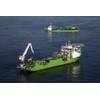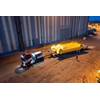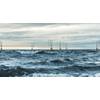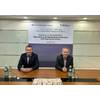API Publishes RP forr Structual Integrity Management
The American Petroleum Institute (API) has published a new recommended practice for structural integrity management.
The new guidelines emphasise the importance of understanding topside structural integrity in order to maintain the offshore structures used in oil and natural gas drilling and production operations. Fugro’s on line monitoring (OLM) instrumentation package is helping asset owners to evaluate structural integrity as part of these new recommendations.
The evaluation of structural integrity is central to the Recommended Practice for Structural Integrity Management of Fixed Offshore Platforms (RP 2SIM), which stresses the need for inspections above and below the waterline, as well as assessment, risk reduction, mitigation planning and decommissioning. Storm damage and ageing assets are important reasons for understanding topside integrity. These are both particularly relevant in the Gulf of Mexico, where many fixed offshore platforms are exposed to extreme weather conditions, including hurricanes.
The use of Fugro’s OLM system is consistent with API RP 2SIM. In fact, it is already playing an effective role in evaluating structural integrity by monitoring the natural frequencies of a number of platforms, including ageing and storm-damaged assets.
As a permanent installation on an older or lower-fatigue structure, the OLM system can detect member severance between inspection periods. Armed with this insight, asset owners can ensure that repairs are carried out in a timely manner and without increasing the stress on other structural members before the next inspection.
The OLM system can also be used as a temporary installation, to define the structural response of a platform before an extreme weather event such as a tropical storm, hurricane or winter storm. Having established this baseline, Fugro can then remobilize the temporary system after a potential damage event and use the data to detect any changes in structural stiffness.

















 February 2024
February 2024



